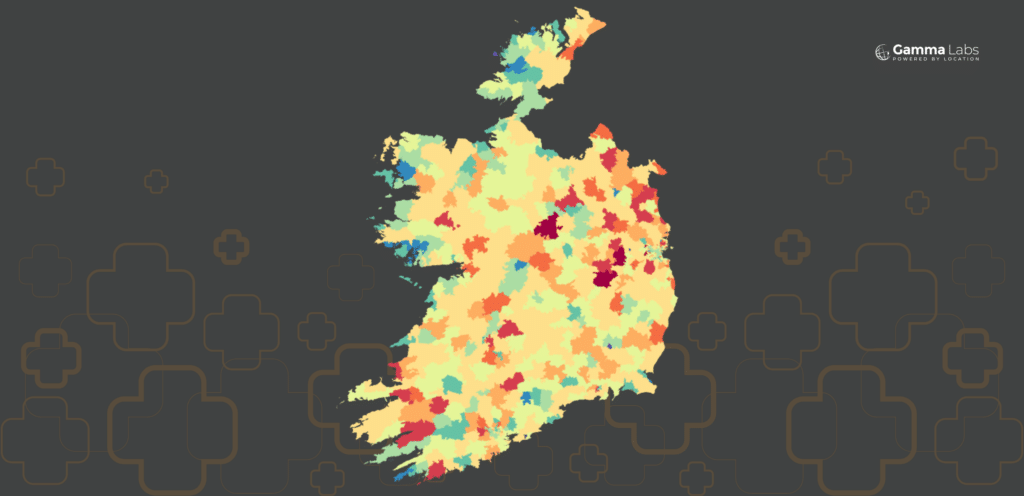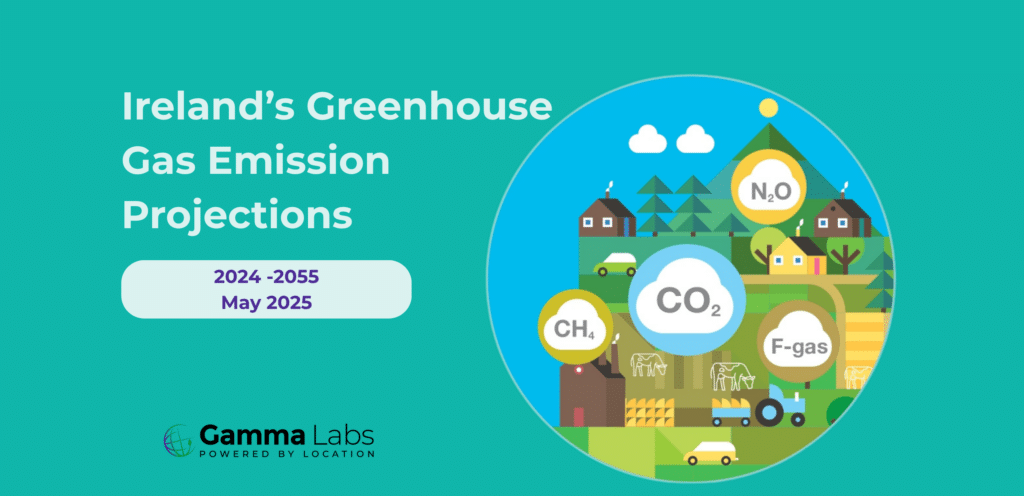Gamma visualises Census data to show sustainability trends across Ireland

- Highest proportion of homes with oil-fired central heating found in Monaghan and Cavan
- Just over a quarter (25.8%) of households in Ireland have a form of renewable energy source
- Solar water heating panels were most prevalent with 5.2% of homes having same
- 32% of all workers said they work from home at times
- Fewer commuters traveling by private car in 2022 compared to 2011
Gamma, a leading location intelligence technology company in Ireland, has visualised Census data to show sustainability trends across Ireland.
Overall, the 2022 Census showed that the proportion of homes with oil-fired central heating is lower than in 2011, now standing at 39%. However, this fluctuates greatly depending on the location, with the highest rate of oil-fired central heating found in Monaghan (75%) and Cavan (69%). At the other end of the spectrum, just 4% of households in Dublin City rely on oil-fired central heating.
The county-to-county variation in the use of natural gas is even more noticeable as only 1% of households in Donegal and Wexford, and 2% of households in Longford, Kerry and Leitrim use natural gas for their central heating. Meanwhile, more than 60% of households in Dublin are reliant on same.
Solid fuels (such as coal, peat and wood) are less popular across the country as a whole but in Offaly, 35% of households use solid fuel for their home heating. This was largely dominated by peat and turf (27%). When it comes to having a renewable energy source, just over a quarter (25.8%) of households in Ireland have one, with more than half of those using wood or biomass.
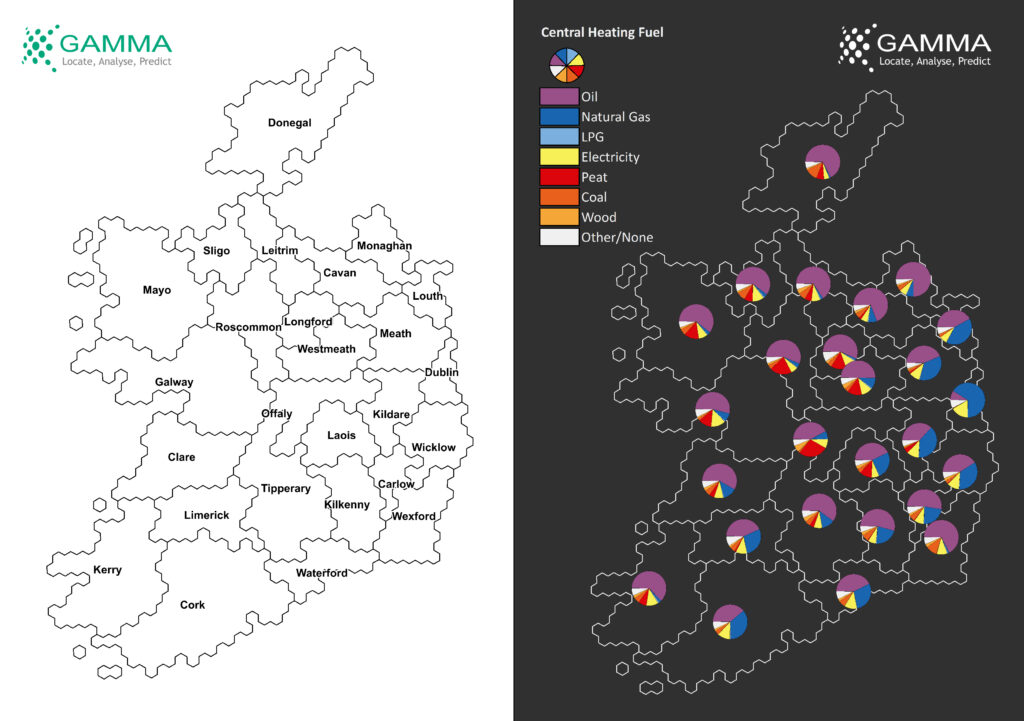
Solar water heating panels were revealed to be the most prevalent form, with 5.2% of properties having same. Meanwhile, 3.9% of households have a heat pump (either air or ground source) and 1.9% households have solar electric panels installed.
Looking at the take-up of renewable energy in individual towns, Craughwell in Galway and Dunshaughlin in Meath have the highest proportion of households with solar electric panels, with almost one in four houses (23%) in those towns having solar electric panels.
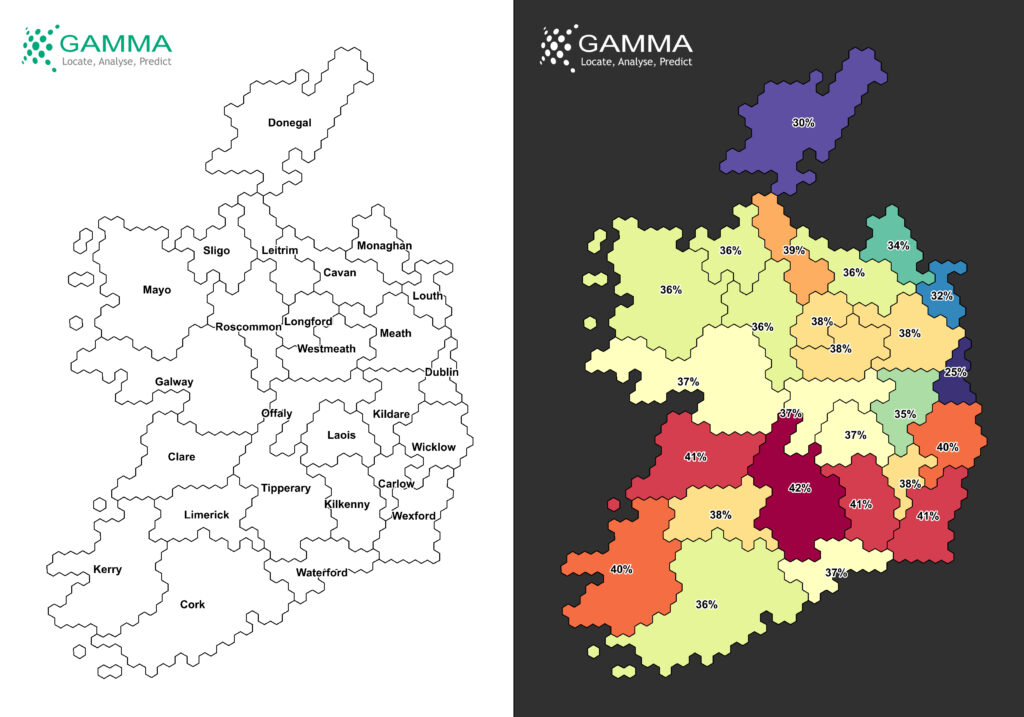
Proportion of Households Using Any Renewable Energy Sources (Wood, Solar, Wind Turbine or Heat Pump)
According to newly released data from the SEAI, the towns (with over 500 population) that have the most solar potential are all in the Southeast of the country, with the Wexford towns of Tagoat, Rosslare Harbour, Bridgetown, Rosslare and Fethard making up the top five. When cross-referenced with the Census data, only Rosslare Harbour (9.5% with solar electric) and Rosslare (2.3%) exceed the national average of 1.9% of households with solar electric panels.
Richard Cantwell, Lead Consultant for Gamma Location Labs, said: “The Census figures suggest that the rate at which we, as a nation, are moving towards more sustainable living and carbon neutrality is slow. Of course, there are other factors likely to be impacting this, including the affordability of and accessibility to renewable energy systems and resources.
“However, on a more positive note, it’s clear from the SEAI data that there is great potential in certain areas. For instance, with solar electric panels, there is a lot of room for expansion in those areas best poised to take advantage of solar energy in Ireland.
“It is also promising to see that we are improving from an environmental perspective and – perhaps due to the cost-of-living crisis and the pandemic which also brought about widespread remote working – people appear to be more conscious than before of their energy consumption, behaviours and choices.”
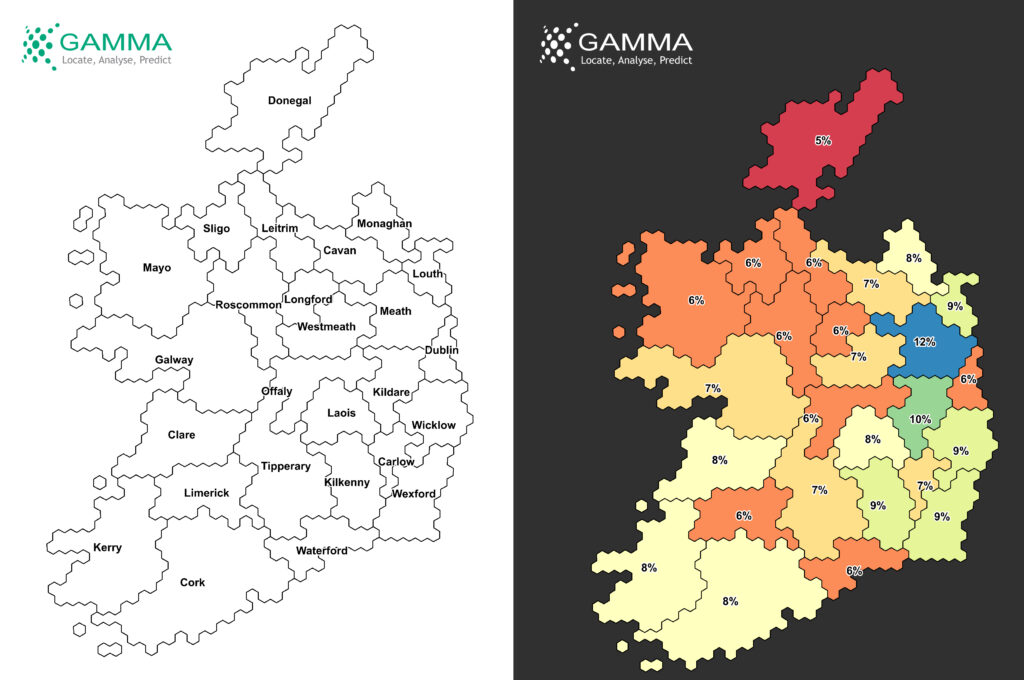
Estimated Proportion of Households with Solar Panels
On the topic of working from home, the 2022 Census revealed a big increase in the proportion of workers who now work mainly or entirely from home, with this total more than doubling from 4.8% in 2016 to 11.3% in 2022. Almost a third (32%) of all workers said they work from home at times.
Among those who do still commute to work, school or college, proportionately fewer people are now travelling by private car or motorcycle – 58% in 2022 compared to 61% in 2011. Students aged 13 to 18 are the only subgroup not to have reduced reliance on private vehicles as 43% of this group are travelling by private vehicle (the same proportion as in 2016 and 2% higher than in 2011).
Considering all commutes to work, school or college, the average car driver is now accompanied by slightly more passengers than before, meaning there are 1.55 people travelling per car on the road – compared to 1.45 people per car in 2011.
Richard Cantwell commented: “As with home upgrades, the data indicates that people are making small changes to their daily lives which will benefit the environment. However, as is the case with both individuals and businesses, more action and supports are required to ensure that we are moving towards our Climate Action Plan 2023 targets and becoming more sustainable.”

Proportion of Workers Aged 15+ Who Ever Work From Home
Michael Hanratty, CEO of BERWOW, and an expert on home energy and retrofit, “The approach needs to be twofold. Firstly, consumers need to know and understand the BER rating of their home and be able to easily access information on the energy retrofit options for their properties, including the cost-saving and environmental benefits. Our free online tool BERWOW, can support this insight.
“Secondly, companies can now use multiple new data sources to build sustainability and net zero carbon into their business strategies, thereby improving their offerings and services for customers. With collective education and action involving both individuals and organisations, we can all become more aware of climate change and how to reduce its increasing impact on daily lives around the world.”
@ 2023 Gamma.ie by Monika Ghita
About Gamma Location Labs
Gamma Location Labs is a technology-focused division of Gamma, dedicated to developing innovative solutions that harness the power of location intelligence. Building on Gamma’s extensive experience since 1993 integrating software, data, and services to help clients reduce risk through location intelligence, Gamma Location Labs pioneers cutting-edge technologies, such as BERWOW, to address diverse industry needs. Based in Dublin, Ireland, the company delivers ground-breaking products that drive efficiency, risk reduction and market growth.
About BERWOW
BERWOW was established in 2017 to develop innovative software solutions that would use BER data to enable Irish householders to make informed decisions on deep energy retrofits for their dwellings. Its foundation brought together a unique blend of experts in building energy rating, retrofit finance and locational software solutions to create the BERWOW solution.


